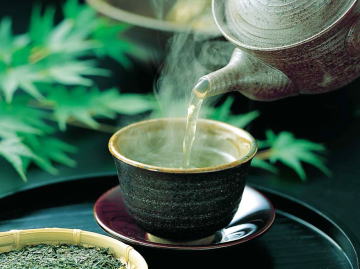Below is an article I found at Nuclear Age Peace Foundation I hope you enjoy it friends.
Why Today's Peace Activists Should Not Be Discouraged: An Example from 1958
By Lawrence S. Wittner Originally published on History News Network
After nearly five years of bloody, costly war in Iraq, with no end in sight, many peace activists feel discouraged. Protest against the war and the rise of antiwar public opinion seem to have had little effect upon government policy.
But, in fact, it is too early to say. Who really knows what impact peace activism and widespread peace sentiment have had in the past five years or will have in the near future? Certainly not historians, who will spend decades pulling together such information from once secret government records and after-the-fact interviews.
What historians can do, of course, is assess the impact of popular protest on events in the more distant past. And here the record provides numerous intriguing illustrations of the power of protest.
One example along these lines occurred fifty years ago, in 1958, when the Soviet and U.S. governments stopped their nuclear explosions and commenced negotiations for a nuclear test ban treaty.
Ever since the first explosion of an atomic bomb, at Alamogordo, in July 1945, the great powers had been engaged in a deadly race to develop, test, and deploy what they considered the ultimate weapon, the final guarantee of their "national security." The United States, of course, had the lead, and used this with devastating effect upon Hiroshima and Nagasaki. But, in 1949, the U.S. monopoly on nuclear weapons was cracked by the Soviet Union. In 1952, the British also entered the nuclear club. As the nuclear arms race accelerated, all three powers worked on producing a hydrogen bomb--a weapon with a thousand times the destructive power of the bomb that annihilated Hiroshima. Within a short time, all of them were testing H-bombs for their rapidly-growing nuclear arsenals.
The nuclear tests--which, by late 1958, numbered at least 190 (125 by the United States, 44 by the Soviet Union, and 21 by Britain)--were conducted mostly in the atmosphere and, in these cases, were often quite dramatic. Enormous explosions rent the earth, sending vast mushroom clouds aloft that scattered radioactive debris (fallout) around the globe. The H-bomb test of March 1, 1954, for example--which the U.S. government conducted at Bikini atoll in the Marshall Islands, a U.N. trust territory in the Pacific—was so powerful that it overran the danger zone of 50,000 square miles (an area roughly the size of New England). Generating vast quantities of radioactive fallout that landed on inhabited islands and fishermen outside this zone, it forced the evacuation of U.S. weather station personnel and Marshall Islanders (many of whom subsequently suffered a heavy incidence of radiation-linked illnesses, including cancer and leukemia). In addition, the Bikini test overtook a Japanese fishing boat, the Lucky Dragon, which received a heavy dose of radioactive ash that sickened the crew and, eventually, killed one of its members.
Recognizing that these nuclear tests were not only paving the way for mass destruction in the future, but were already beginning to generate sickness and death, large numbers of people around the world began to resist. Prominent intellectuals, such Albert Schweitzer, Bertrand Russell, and Linus Pauling, issued public appeals to halt nuclear testing. Pacifists sailed protest vessels into nuclear test zones in an attempt to disrupt planned weapons explosions. Citizens' antinuclear organizations sprang up, including the National Committee for a Sane Nuclear Policy (better known as SANE) in the United States, the Campaign for Nuclear Disarmament in Great Britain, and dozens of others in assorted nations. In the United States, the 1956 Democratic presidential candidate, Adlai Stevenson, made a halt to nuclear testing a key part of his campaign. Antinuclear pressures even developed within Communist dictatorships. In the Soviet Union, top scientists, led by Andrei Sakharov, appealed to Soviet leaders to halt nuclear tests.
Polls during 1957 and 1958 in nations around the globe reported strong public opposition to nuclear testing. In the United States, 63 percent of respondents favored a nuclear test ban; in Japan, 89 percent supported a worldwide ban on the testing and manufacture of nuclear weapons; in Britain, 76 percent backed an agreement to end nuclear tests; and in India (with the survey sample limited to New Delhi), 90 percent thought the United States should unilaterally halt its nuclear tests. In late 1957, pollsters reported that the proportion of the population viewing H-bomb testing as harmful to future generations stood at 64 percent in West Germany, 76 percent in Norway, 65 percent in Sweden, 59 percent in the Netherlands, 60 percent in Belgium, 73 percent in France, 67 percent in Austria, and 55 percent in Brazil.
Within the ranks of the U.S. government, this public aversion to nuclear testing was regarded as bad news, indeed. The Eisenhower administration was firmly committed to nuclear weapons as the central component of its national security strategy. Thus, halting nuclear testing was viewed as disastrous. In early 1956, Lewis Strauss--the chair of the U.S. Atomic Energy Commission and the top figure in setting the administration's nuclear weapons policy--insisted: "This nonsense about ceasing tests (that is tantamount to saying ceasing the development) of our nuclear weapons plays into the hands of the Soviets." The United States, he told Eisenhower, should hold nuclear tests "whenever an idea has been developed which is ready for test."
And yet, other administration officials felt hard-pressed by the force of public opinion. In a memo written in June 1955, Secretary of State John Foster Dulles noted that, although the United States needed a nuclear arsenal, "the frightful destructiveness of modern weapons creates an instinctive abhorrence to them." Indeed, there existed "a popular and diplomatic pressure for limitation of armament that cannot be resisted by the United States without our forfeiting the good will of our allies and the support of a large part of our own people." Consequently, "we must . . . propose or support some plan for the limitation of armaments."
But Dulles equivocated over specific plans, and the administration increasingly felt the heat. In September 1956, with Stevenson's call for an end to nuclear testing now part of the presidential election campaign, Eisenhower ordered an administrative study of a test ban, citing "the rising concern of people everywhere over the effect of radiation from tests, their reaction each time a test was reported, and their extreme nervousness over the prospective consequences of nuclear war." Given opposition from other officials, this study, too, went nowhere. Even so, Eisenhower remained gravely concerned about the unpopularity of nuclear testing. In a meeting with Edward Teller and other nuclear weapons enthusiasts in June 1957, the president told them that "we are . . . up against an extremely difficult world opinion situation," and "the United States could [not] permit itself to be 'crucified on a cross of atoms.' " There was not only "the question of world opinion . . . but an actual division of American opinion . . . as to the harmful effects of testing."
By early 1958, the outside pressures were becoming so powerful that Dulles began a campaign to halt U.S. nuclear tests unilaterally. Having learned, through the CIA, that the Soviet government was about to announce a unilateral suspension of its tests, he called together top administration officials on March 23 and 24 and proposed that Eisenhower issue a statement saying that, after the U.S. government completed its nuclear test series that year, there would be no further U.S. nuclear testing. "It would make a great diplomatic and propaganda sensation to the advantage of the United States," Dulles explained, and "I feel desperately the need for some important gesture in order to gain an effect on world opinion." But Strauss and Defense Department officials fought back ferociously, while Eisenhower, typically, remained indecisive. Testing was "not evil," the president opined, "but the fact is that people have been brought to believe that it is." What should be done in these circumstances? Nothing, it seemed. Eisenhower remained unwilling to challenge the nuclear hawks in his administration.
However, after March 31, 1958, when the Soviet government announced its unilateral testing moratorium, the U.S. hard line could no longer be sustained. With the Soviet halt to nuclear testing, recalled one U.S. arms control official, "the Russians boxed us in." On April 30, Dulles reported that an advisory committee on nuclear testing that he had convened had concluded that, if U.S. nuclear testing continued, "the slight military gains" would "be outweighed by the political losses, which may well culminate in the moral isolation of the United States." The following morning, Eisenhower telephoned Dulles and expressed his agreement.
Thereafter, the president held steady. Meeting on August 12 with Teller and other officials, he reacted skeptically to their enthusiastic reports about recent weapons tests. "The new thermonuclear weapons are tremendously powerful," he observed, but "they are not . . . as powerful as is world opinion today in obliging the United States to follow certain lines of policy. Ten days later, after a showdown with the Defense Department and the AEC, Eisenhower publicly announced that, as of October 31, the United States would suspend nuclear testing and begin negotiations for a test ban treaty.
As a result, U.S., Soviet, and British nuclear explosions came to a halt in the fall of 1958. Although the French government conducted its first nuclear tests in early 1960 and the three earlier nuclear powers resumed nuclear testing in late 1961, these actions proved to be the last gasps of the nuclear hawks before the signing of the Partial Test Ban Treaty of 1963--a measure resulting from years of public protest against nuclear testing. Against this backdrop, the 1958 victory for the peace movement and public opinion should be regarded as an important break in the nuclear arms race and in the Cold War.
Thus, if peace activists feel discouraged today by the continuation of the war in Iraq, they might well take heart at the example of their predecessors, who recognized that making changes in powerful institutions requires great perseverance. They might also consider the consequences of doing nothing. As the great abolitionist leader, Frederick Douglass, put it in 1857: "If there is no struggle, there is no progress."
Lawrence S. Wittner is Professor of History at the State University of New York/Albany.




 Is there a difference between tea grown in China, and tea from other places? What are the origins of tea, and how did it become so popular?
Is there a difference between tea grown in China, and tea from other places? What are the origins of tea, and how did it become so popular?






